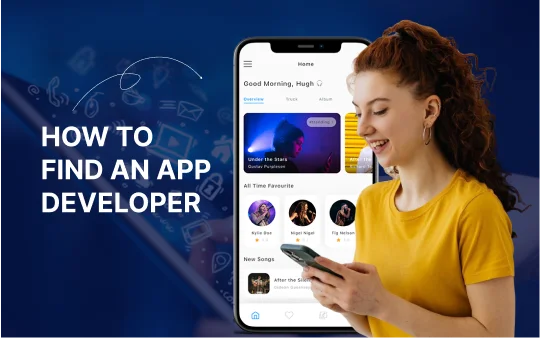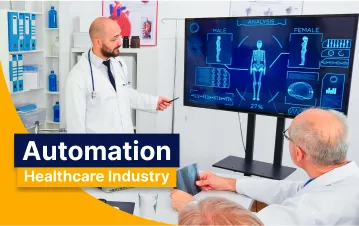Software developers know well how daunting the task of creating e-learning software can be. They all hope to build six-figure, engaging, and informative learning solutions. It is imperative for an e-learning business to create e-learning software and courses for mass-market needs. However, the process of getting there often feels complex. After all, e-learning app development is a one-way process where developers work without knowing learners and their needs. That’s where agile software development services can help.
With agile software development, e-learning software solutions are built by taking into account the design principles, planning sessions, and collaboration between the development side and the business side. This process is also easy and incurs less cost.
Creating Custom E-learning Software
It all starts with the development of a learning management system (LMS). I have one option to show you here. This is a web-based learning management system built on .Net, MVC5, and Decoupled Architecture. This is a learning management system (LMS) designed for the administration and delivery of informational and educational content to people who are preparing for their exams. What makes our app unique is that it works well and support features:
- Create media options via PDFs, videos, classroom sessions, and SCORM.
- Create tests, quizzes, and exams by using adjustable grading criteria and randomization for preventing cheating.
- Improve learner’s interaction by creating discussion forums and then exchange ideas, knowledge, and opinions in the forums.
- The tool assigns specific tasks, goals, and courses to each of its users
- Tracks the growth of participants via insightful reports.
- Content flexibility in the form of creating your own content by integrating cutting-edge courses taught by our domain experts.
- Track training progress through live sessions.
- Custom dashboards that allow users to view important info at a glance.
- Authenticated access to prevent unauthorized access and cheating.
- Create a responsive interface that works across all devices automatically.
What can be included in the development plan?
Customized e-learning solutions are created after the eLearning course plan is done. At this stage, the developer can start programming and must work together closely with the client. The developer will most likely need to clarify some questions from the clients to do their job well.
Here are some questions they might ask:
- Do you have any examples from your organization or working space that can be included in the e-learning software solution?
- Are there any specific requirements basis on the scenario the learner want to choose?
- What should happen if a user wants the complete course?
The e-learning software development process might take longer since there’s one developer doing the job. As such, it’s always a better idea to hire one e-learning development team. Depending on the project needs, you might ask the team if they specialize in building complex e-learning software and apps or not.
Either way, the circle of e-learning software development includes the following:
- Requirements analysis of the project: Preparing a detailed plan for tech specifications takes a lot of time. The development team setup basic requirements so the developers know what they need to build.
- Planning, Design, Organize and draw the final outcome for your e-learning software.
- Implementation stage when the programming work is done.
- Testing is important and needed to make sure everything works well with the software.
- The product goes live, this is the time to listen to the feedback and add new features to the product.
Our software development teams use agile development methodologies which means these steps are done over 2-3 week cycles. The client often participates in meetings with the development team and conduct demo sessions to review the current work.
You will definitely need a solid e-learning development team for your product. Creating it from scratch will take a few weeks and cost accordingly.
Technologies Used for e-Learning Software Development
Cloud Computing: Cloud computing is nothing but a group of computing resources located at various places in the world. Cloud computing guarantees e-learners access to data on any gadgets from anywhere in the world.
Internet of Things (IoT): IoT is a useful technology that creates a global network among educators and learners. The technology helps e-learners to interact with their educators worldwide.
Artificial Intelligence: The technology helps in personalized learning which is one of the most important areas of education. AI helps learners to find the best course material based on their interests, and your way of learning.
Augmented/Virtual Reality: The visual content catches the student’s attention so quickly. It also ensures the engagement and interaction of the students and what they are learning.
ALSO READ: TOP EDUCATION & ELEARNING SOFTWARE DEVELOPMENT COMPANIES
Is Your Business Equipped With the e-learning Software or LMS?
If you are working in the realm of e-learning, having an e-learning software solution or LMS can be a great solution to all your issues. You should take advantage of the e-learning software features and functionality. You can review other users that have had the same LMS software for creating successful online courses and online classes.
Overall, it was a great experience for our development team to work on the LMS software solution. At each step of the project, we ensured that our development team and client were on the same page by using agile methodologies. This helped us to stay well-organized throughout the process. On the other hand, before start working on the LMS project, you should know what modules, tools, platforms, technologies can be added to your e-learning software.
For example, there are e-learning app development platforms that you can use for the development of LMS or e-learning software. These platforms are also divided into three categories: open-source, proprietary, and partly free. Here are the options that you can select.
- Open edX: It is a free open-source learning management platform built on Python and the xBlock ideology. It enables online instructors to create self-paced courses using a single platform.
- Blackboard: It is a proprietary LMS platform that spans teaching and e-learning ensuring that the learner experience is the best both online and in the classroom.
Most of the LMS and e-learning software simply replicate traditional educational techniques. Modern LMS provides means to restructure the entire e-learning solutions and help meet the needs of the changing education environment.
If you need any help with the LMS or e-learning software development, get in touch with us. Or leave your query in the comment section.










